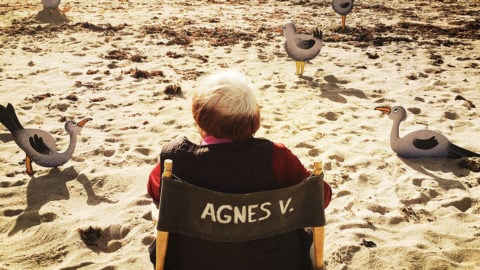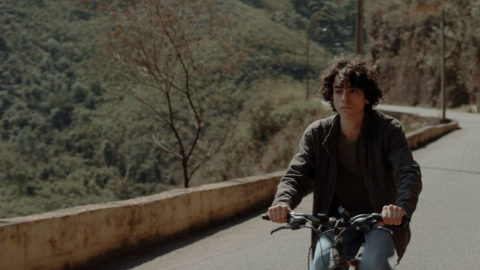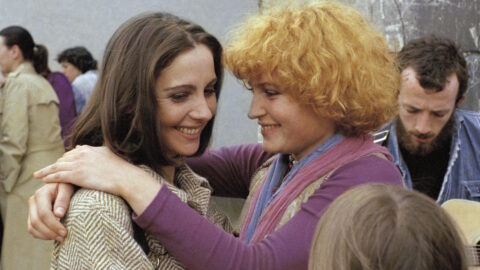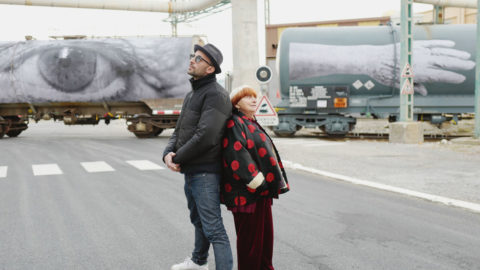Hard Traveling: Araby, Gabriel and the Mountain, and Vagabond
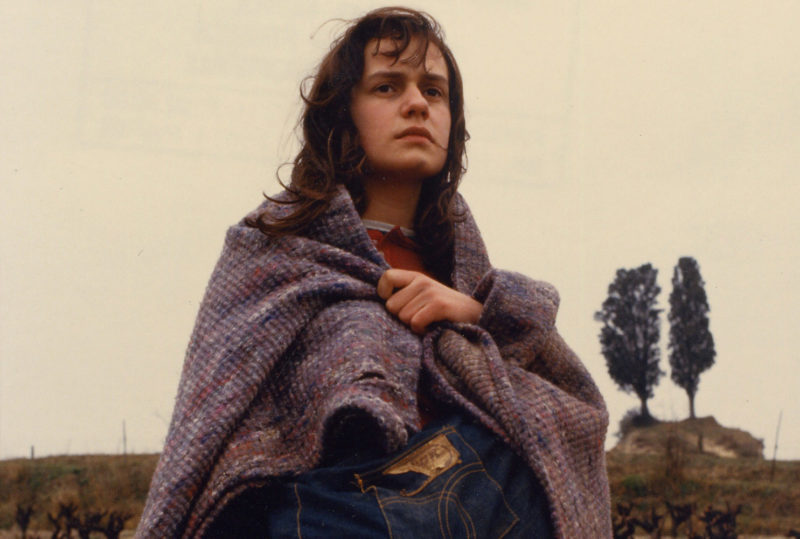
Vagabond
In a moment of fleeting and uncharacteristic tenderness, Mona (Sandrine Bonnaire), the title character in Agnès Varda’s Vagabond (1985), writes her name and that of her lover, David (Patrick Lepcynski), with one finger on a dusty mirror in the deserted chateau where they are squatting. David promptly rubs out the names, admonishing her, “No traces.”
But Vagabond is all about traces. A fiction film posing as a lyrical documentary, it pieces together the final months of Mona—a stubborn, charismatic drifter who in the opening scene is found frozen to death in a ditch—through the memories of people whose paths crossed hers. Occasionally, these people address the camera directly, voicing theories and opinions that reveal more about the speakers than they do about Mona. To some she is a romantic symbol of freedom, to others a feral but vulnerable child; to some revolting, to others enticing. To many leering men she is prey, fair game (inevitably, she is raped), while women tend to envy and admire her rejection of ties and expectations. In the end, Mona’s physical reality is undeniable—her stink, her dirty fingernails, her tangled hair, her disintegrating boots, her struggles to eat and sleep and stay warm—but her character is impenetrable, her motives a mystery.
Like its central figure, Varda’s film, whose French title Sans toit ni loi translates as “Without Roof or Rules,” is impossible to forget, and it has left its own traces. Two contemporary Brazilian films have strong echoes of Vagabond, which director Fellipe Barbosa has cited as an influence on Gabriel and the Mountain, and which also seems like an ancestor to João Dumans and Affonso Uchoa’s Araby (aka Arábia). The former opens with the title character’s body being discovered on Mt. Mulanje in Malawi and flashes back to his final months, recalled by friends and acquaintances who, like the speakers in Varda’s film, are sometimes framed head-on and many of whom are non-actors portraying themselves. The protagonist of Araby, Cristiano (Aristides de Sousa), an itinerant laborer in Ouro Preto, slips into a coma during the film’s prologue; his story unfolds as a teenaged neighbor reads through the notebook he left. In this journal, he tries to make sense of his life on the road, reflecting that “all we have is what we remember.”
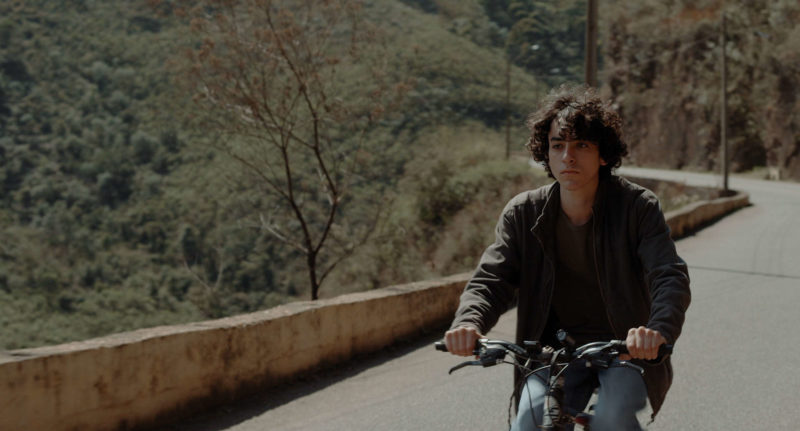
Araby
Where Mona is seen through the eyes of others and gives little away, the quiet, outwardly nondescript Cristiano narrates his own story, his notebook entries becoming a voiceover to the main body of the film. His words form a soulful counterpoint to de Sousa’s withdrawn, inexpressive, yet curiously touching performance. Cristiano explains how he took to the road after a stint in jail for a bungled car theft; walking and hitchhiking from place to place, he picks tangerines, unloads freight, builds roads, and finally toils in an aluminum factory. His life is very much like those described in Depression-era Woody Guthrie songs like “Hard Travelin’” and “I Ain’t Got No Home.” Cristiano is stirred by the story of a former labor leader who tried to organize workers, but that’s as close as he gets to any possibility of action or change. Stiffed by a boss who refuses to pay him, he is left with nothing but fruit to peddle by the roadside. In one of the movie’s few extended conversations, he and a fellow worker reflect on the best and worst items to carry, their exchange becoming a list-poem about the burdens of labor. In a climactic epiphany, the noises of a hot, grinding factory fall away, and in a deathlike silence Cristiano recognizes the emptiness of the worker’s lives, the extent to which they have been reduced to machinery, and concluding with heartbreaking simplicity: “I want to go home. I wish everyone would go home.” (This sequence connects to film to its namesake, James Joyce’s short story “Araby,” which culminates in one of the most famous and bleak of literary epiphanies.)
This is a drab world of concrete and dirt, lonely sheds and Spartan bunkhouses, gray skies and tired vegetation. The colors are muted, the rumble of trucks on the highway and clanking rhythms of the factory a constant drone. But life is not without warmth; the routine of work and travel is punctuated by wonderful scenes of men sitting around playing acoustic guitars and singing together, songs about the rambling life on the road. Music is the one grace note in their lives—so it seems, at least, until Cristiano meets Ana (Renata Cabral) while working at a textile factory. Their love is simple and real, the best thing in his life, yet they too drift apart. There is no sense of freedom in this man’s drifting. He is neither a defiant dropout nor a determined seeker; he is ordinary, and at the same time enigmatic in his dislocation and inability to hold onto things. In one disturbing episode, he runs over a child while driving on a dark road at night; he rolls the body into a river and takes off—leaving behind a friend with whom he’d traveled for three years. The film itself mirrors its protagonist’s reticence, leaving much unresolved; it never returns to the framing prologue and the teenage boy, André (Murilo Caliari), who is reading the notebook. Instead the film trails off, fades out, just as Cristiano himself seems to lapse away. He is last seen falling asleep beside the embers of a campfire, echoing the terribly sad final shot of Vagabond, in which Mona seems to simply give up, lying where she has fallen and letting the cold claim her.
When her body is discovered by a farmer in the film’s opening scene, she looks like a figure from Pompeii, lying in an oddly twisted position, lightly dusted with earth and dry wine dregs. Gabriel and the Mountain opens with two men harvesting grasses on the lush, windy slopes of Mt. Mulanje and coming upon “the white one,” lying on his side under a rock. The real Gabriel Buchmann was a friend of the director, who began thinking about making a film after Buchmann had disappeared but before he was found dead. Barbosa’s project is an effort not just to understand this death but to create a three-dimensional portrait of the lost man, in effect to bring him back to life. He does not shy away from the less attractive sides of Gabriel’s personality. When we meet him in Kenya, several months before his demise, he is far along on a trip around the world before entering UCLA as a graduate student. As played by João Pedro Zappa, he is a bantam charmer with a knack for making friends and a wide-eyed hunger for new experience. He is also self-righteous and over-confident; he bristles at being considered a mzungu (white man), not wanting to be seen as a privileged Westerner or a typical tourist, yet he often displays obnoxious entitlement and arrogance, as well as recklessness and impatience that will ultimately prove fatal. Climbing Mt. Kilimanjaro, he sets off at a run, smugly passing other trekkers, only to collapse from altitude sickness, snow-blindness, and exhaustion, and be saved by his patient and supportive guide. But his flaws never wholly eclipse his energy and playfulness, and if he falls short of the ideal traveler he dreams of being, this dream remains a captivating one.
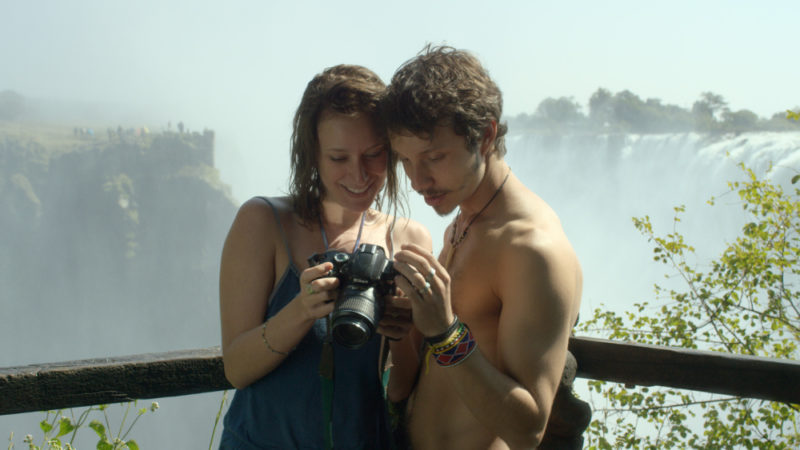
Gabriel and the Mountain
Gabriel and the Mountain is a hybrid of documentary and fiction, with actors playing the lead roles of Gabriel and his girlfriend Cristina (Caroline Abras) interacting with African non-actors playing themselves. The experience feels more like watching a documentary, not because we already know the ending, but because the film seems driven by a desire to understand and to present an accurate picture—including ambivalence and tedium—more than by the impulse to tell a story. Barbosa doesn’t deny viewers the pleasures of a gorgeous travelogue (the final scenes on Mt. Mulanje are particularly ravishing), but he resists simplifying the discomforts—moral as much as physical—of travel, particularly in the third world, just as he resists idealizing his friend or finding too much meaning in his pointless death.
All these films are as much about disappearance as about travel; in one sense, to travel is to disappear, to be constantly leaving. Varda finds a simple but potent technique to illustrate this in Vagabond: the camera keeps losing Mona. Sometimes she walks out of a shot and the camera stays behind to look at the space she left; sometimes it slides away from her, tracking sideways to see what else is around, settling on austere wintry landscapes or mundane still lifes. There is no clear linear chronology to the episodes, and it’s impossible to map Mona’s wanderings. She pitches her tent in woods and fields, sleeps in vacant houses, takes up with a Tunisian vine-cutter, goes on a road trip with a female academic studying a disease of plane trees, and for a time takes refuge with a philosopher turned goat herder and his wife. It is he who mounts the most incisive critique of her purposeless rambling, warning her that at a certain point living on the road becomes willful self-destruction, and arguing that in proving herself “useless,” she actually supports the capitalist system she wants to resist. He seems to be proven right, as Mona grows increasingly desperate, tired, and degenerate, falling in with a gang of druggy vagrants and petty criminals who hang around a train station preying on commuters. Varda said that she wanted to make her protagonist unsympathetic—ungrateful, ill-mannered, a mess—but she succeeds in creating a portrait that is neither romantic nor judgmental.
The similarities between these films reflect not just cinematic influence but something more basic: the way that loss and disappearance, the wiping away of traces, kindle a desire to set something down, to understand what it was, to capture and preserve it—on film, for instance. Buchmann left behind photographs that appear over the closing credits, images in which he grins and clowns, or in which we see what he saw through a smudgy lens. Cristiano leaves behind his notebook; Mona leaves behind nothing except the memories of those who saw her. All we have is what we remember.
Araby opens June 22 at the Film Society of Lincoln Center. Gabriel and the Mountain is in release now. Vagabond is available from Criterion and on FilmStruck.
Imogen Sara Smith is the author of In Lonely Places: Film Noir Beyond the City and Buster Keaton: The Persistence of Comedy, and has written for The Criterion Collection and elsewhere.



